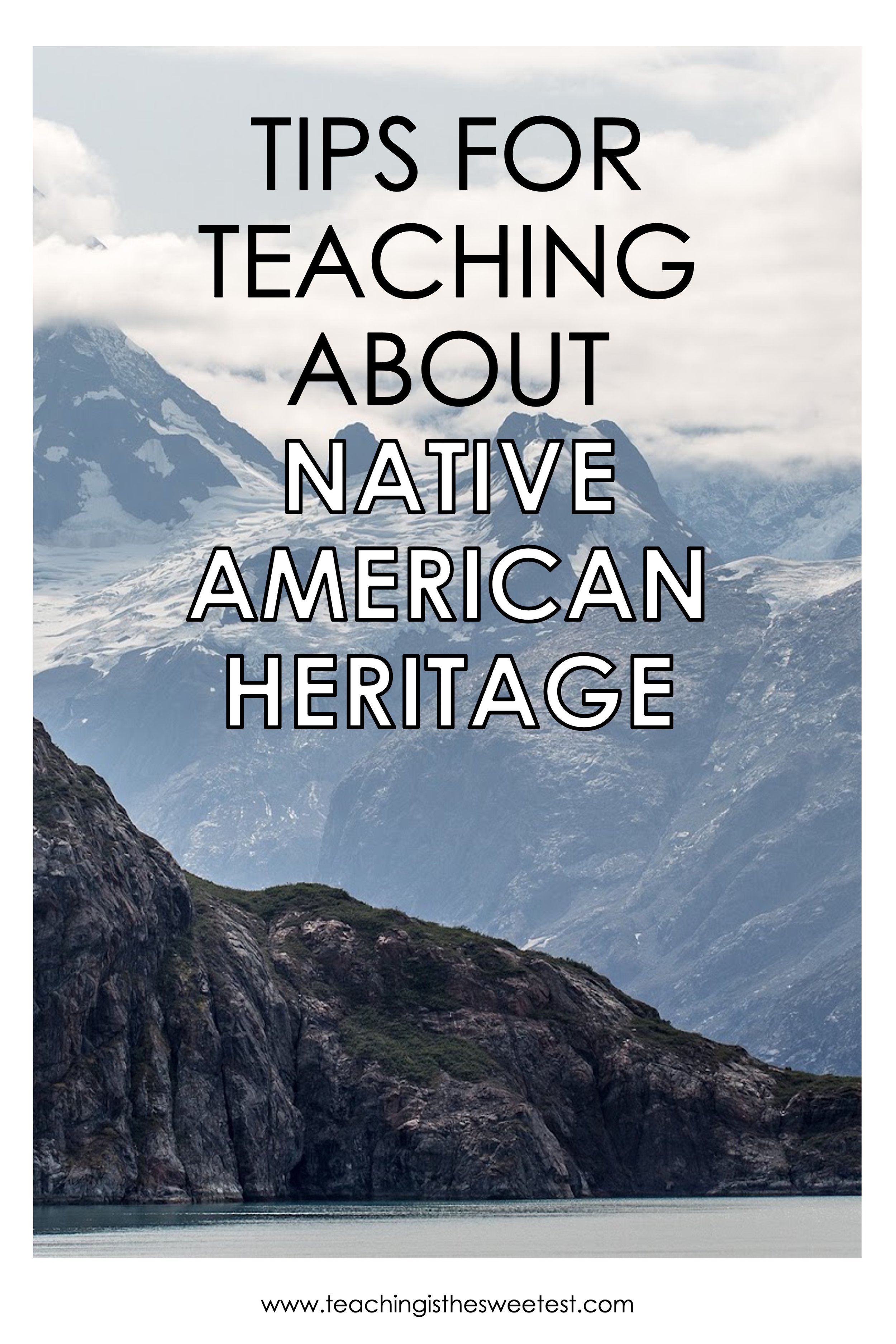Tips for Teaching About Native American Heritage
It can feel challenging to teach your students about Native American heritage and the countless moments of hard history surrounding it. In this post, you can find a few tips and lesson plan ideas to help you mindfully teach about and share Native American heritage in your classroom.
Acknowledge their land.
Acknowledge individuality.
Listen to their voices.
Use their language.
Make it clear that Native people are “still here”.
1 - Acknowledge Their Land
Do you know what land acknowledgment means? It’s a practice for both Native people and non-natives. It can be used before public events and other important gatherings, or really anytime. The purpose of a land acknowledgment is:
to honor the people who first lived on the land and their ancestors who are still living today
to recognize the history of the land
to acknowledge the relationship that still exists between Native Americans and their traditional land
to express gratitude for the land
Many places have been home to many Native nations throughout history. Even if Native nations do not live on the same land that their ancestors lived on, the land is meaningful to them.
Lesson idea:
Create a land acknowledgment statement with your students.
Find out about the original inhabitants of the land where your school is.
Learn about the history of the land, including any treaties made.
Find the names of Native American nations in the area.
Use the names, spelling, and pronunciation that they use for themselves.
A land acknowledgment is more than just something to say. Creating and sharing a land acknowledgment statement is a process of reflecting and learning. Land acknowledgment can create awareness and inspire support for Native American communities.
2 - Acknowledge Individuality
Native American people are often grouped together. The individuality of each nation is often ignored or overlooked. And yet, in reality, there are over 562 federally recognized nations in the United States today. Each nation is unique. Each has its own history, heritage, and way of living.
Lesson Idea:
Explore Project 562 with Your Students.
Matika Wilbur founded the project with the goal of capturing and reframing the conversation about Native Americans. Explore Project 562’s gallery, read the names of nations included, and share the stories of the people photographed.
3 - Listen to Their Voices
Before you share a book or information about an event surrounding Native heritage, ask yourself a few questions about the author:
Is the author a Native American?
What sources did the author use? Did the author use culturally responsive or Native sources?
Was the book or information reviewed by Native Americans?
Chances are that your school-issued textbook does not meet one or more of these qualifications. If you’re looking for a great place to start reframing your thinking, check out this perspective on American history told by Native voices: An Indigenous Peoples’ History of the United States for Young People by Roxanne Dunbar-Ortiz.
Idea for Action:
Take inventory of your classroom library.
Debbie Reese of Nambé Pueblo established American Indians in Children's Literature to share “critical analysis of Indigenous peoples in children's and young adult books”. You can use the search bar on her website to search a vast collection of titles to read honest reviews.
4 - Use Their Language
Before you teach about Native Americans, consider who you are specifically talking about. Remember from #2 above that each nation is individual and unique. It’s best to use specific names of nations rather than general terms like “Native American” or “American Indian” when possible.
Before teaching about a specific nation, visit the nation’s website if they have one. Read the names they use for themselves. Some prefer “tribe” while others prefer “nation”. You can read more about this in the Smithsonian’s National Museum of the American Indian post “Teaching & Learning about Native Americans”.
LESSON IDEA:
Learn about the Nations that are local to your school.
Use this map as a tool to find nations that are local to your school if you don’t already know about them.
Once you’ve identified them, as a class, visit their websites. Read the words they use to refer to themselves, and read their words about their history.
For example, the Catawba Nation is local to my school district. Check out this amazing resource they have on their website that shares about their history and heritage.
5 - Make It Clear that Native People are “Still Here”
Too often history books and other literature portray Native American history as a thing of the past. It is quite the opposite. You can read about 4 notable Native American people of TODAY in this post and check out this resource that features one notable Native American of TODAY per day for an entire month.
Lesson Idea:
Share Traci Sorell’s book We Are Still Here!
Let this excerpt from Amazon.com convince you of the value of information in this book: “Too often, Native American history is treated as a finished chapter instead of relevant and ongoing.” The book touches on issues “including forced assimilation (such as boarding schools), land allotment and Native tribal reorganization, termination (the US government not recognizing tribes as nations), Native urban relocation (from reservations), self-determination (tribal self-empowerment), Native civil rights, the Indian Child Welfare Act (ICWA), religious freedom, economic development (including casino development), Native language revival efforts, cultural persistence, and nationhood.”
Culturally Responsive Resources
If you’re looking for resources that aim to honor Native American heritage in the ways described above, check out these resources:




